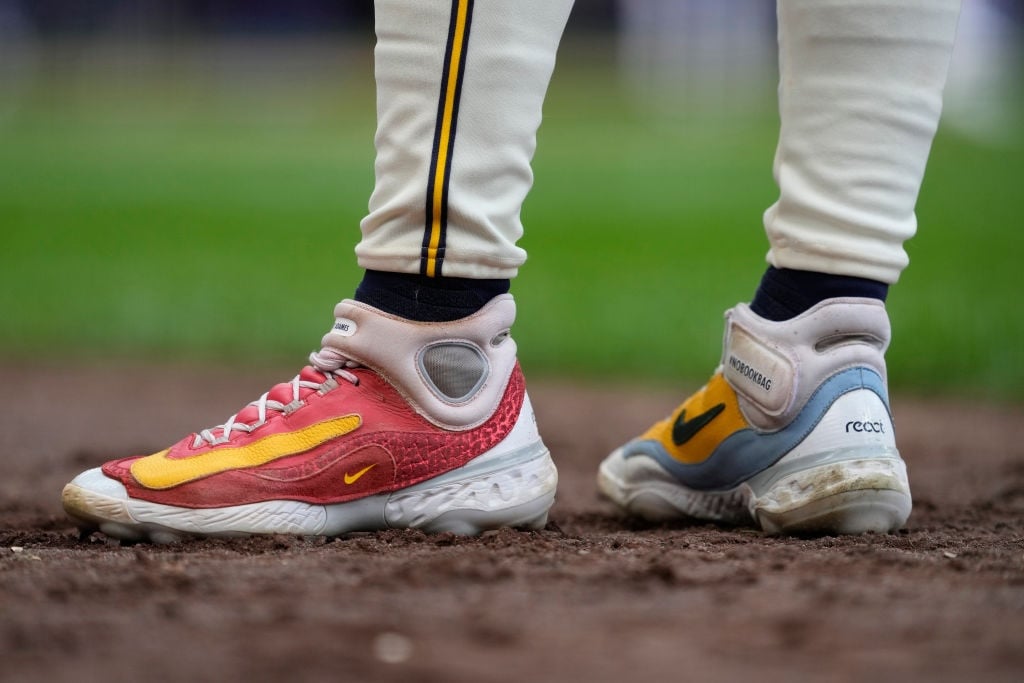Though Oregon-based Nike Inc (NKE +4.64%) is best known as an American footwear and athletic apparel juggernaut, it's easy to forget the company actually generates more than half its revenue overseas.
Last quarter, for example, Nike's international sales rang up at $3.69 billion, or roughly 53.1% of total Nike brand revenue. And while much of that came from core regions like Western Europe and Greater China at $1.42 billion and $801 million, respectively, the growing influence of smaller emerging markets on Nike's overall results is hard to deny.
Emerging markets show promise
On a currency-neutral basis, Nike saw its most recent quarter's brand sales in emerging markets grow 12% year over year to $955 million. Within that, perhaps most notable was Nike brand footwear, which comprised almost 69% of the total at $655 million.
At the same time, investors were rightly concerned that Nike's futures orders in the segment simultaneously declined 6% last quarter. For that, Nike says, we can thank tough year-over-year comparisons in emerging markets including Mexico and Brazil, where Nike enjoyed particularly strong sales last year on the heels of the 2014 FIFA World Cup.
Still, Nike Brand president Trevor Edwards later insisted, "Long term, we remain confident that the emerging markets geography will drive significant growth for the Nike Brand."
This surprising country loves the swoosh
But that's not to say every emerging market is a struggle for Nike right now. According to Credit Suisse's recently released 2015 Emerging Markets Consumer Survey, one country in particular just can't seem to get enough of the Nike brand: Saudi Arabia.
Specifically, Credit Suisse notes Nike has gained significant share in Saudi Arabia over the past few years in terms of planned purchases of sports shoes. And those share increases seem to be picking up steam more recently relative to Nike's largest rivals, including German footwear behemoth Adidas (ADDYY +0.23%):

Nike gains sports shoe market share in Saudi Arabia, Credit: Credit Suisse 2015 Emerging Consumer Survey
In fact, while Nike only lost share in two emerging markets between 2013 and 2014 -- namely in Brazil, as I mentioned above, and in Russia, which has suffered economically amid U.S. and E.U. sanctions -- Saudi Arabia is the only emerging market tracked by Credit Suisse in which Nike actually gained more share than Adidas over the same period.
But what's most surprising is the exaggerated nature of those gains; While Adidas' share remained steady in Saudi Arabia last year, Nike saw an 11% increase there among consumers planning to buy its sports shoes.
So what's driving the love among Saudi Arabians for Nike's iconic swoosh?

The new Saudi Arabian National Soccer Team uniform, Credit: Nike,
For one, Nike has a deal in place to supply the kits (read: "uniforms") for the Saudi National Football Team. It also rolled out a new kit for the team last November which focuses on using its innovative Dri-FIT tech and laser-cut ventilation holes to keep athletes cool in the country's heat. At the same time, Nike strategically used clean colors and "classic football kit styling" to "pay homage to the country's national heritage."
But that's not the only reason Saudi Arabia favors Nike. Consider, for example, a recent profile from The Economist that describes Saudi Arabians as "ardent social media fans." The article notes,
Outsiders often regard the 30m Saudis as far behind the rest of the world. [...] But the country has also rapidly modernised since discovering its vast oil wealth. It has a GDP per capita of almost $26,000. Today thousands of its young people study abroad, speak English and are as globalised as their peers in other countries. Fully 75% of the population are under 30. They have grown up thinking it normal to go online to do everything from ordering a coffee to watching TV."
As it turns out, that propensity for going online greatly favors Nike, which has invested heavily in recent quarters to bolster its e-commerce and connected fitness solutions. Last quarter, nike.com sales rose 42% year over year as both traffic and conversion increased. And for the first time in Nike's history, mobile traffic exceeded desktop traffic thanks in part to the launch of its new footwear-centric SNKRS app.
Nike's rise in Saudi Arabia has also benefited from a lack of competition and preference for domestic brands. According to Credit Suisse's survey, 93% of Saudi Arabians are currently planning to buy Western athletic shoes and apparel, while 0% -- that's right, zero percent -- plan to buy domestic brands. On average in the 10 emerging market economies studied, those two figures narrowed to 56% and 19%, respectively.
In the end, this confluence of ideal consumer demographics, habits, and strategic brand positioning leave Nike uniquely poised to continue grabbing share in this promising market. If Nike can manage to translate that success elsewhere in its emerging market segment, it should go a long way toward ensuring continued growth for years to come.







